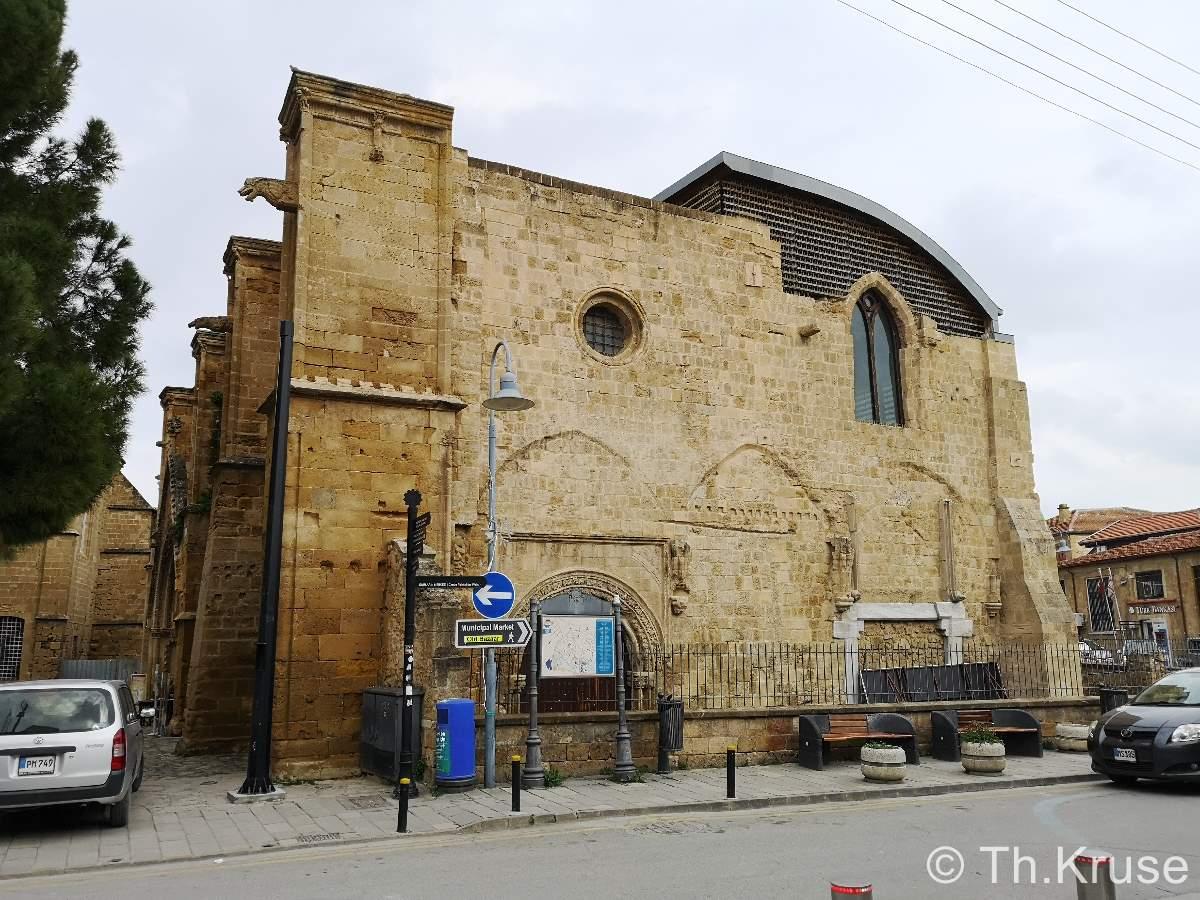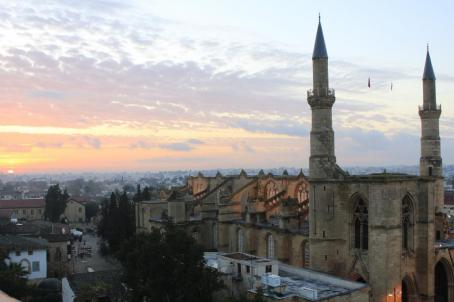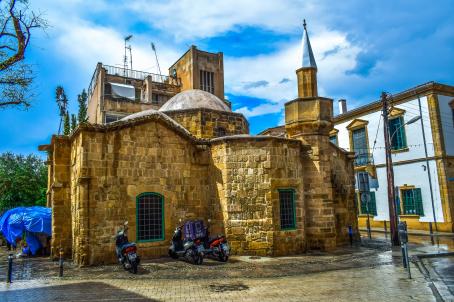Nicosia Bedestan

The Bedestan in the Agia Sophia quarter is a former church building whose origins date back to the 5th or 6th century. At the same time, it is one of the few buildings in Nicosia where many of the different construction phases can still be traced in its architecture. Or as Michalis Olympios aptly describes it, ‘a “mongrel” building consisting of several different parts stitched together in a rather ungainly manner’.
About this building
It is located right next to the Gothic cathedral today known as Selimiye Mosque. Excavations in the 1930s revealed that part of the present building stands on the remains of a small Early Christian basilica. Athanasios Papageorghiou assumes that the small basilica was destroyed and replaced by a new building until the 10th century. Whether and in which form this building was modified from the 10th to the 14th century could not be clarified, which also applies to its historical importance at that time. In the 14th century the construction of a new church was started on the same site. According to documents from 1507 and 1518, the newly built church was consecrated to Panagia Odigitria (Παναγία Οδηγήτρια) and served as Nicosia's Orthodox cathedral. With the conquest of Nicosia by the Ottomans, the church was seized by the new rulers and transformed to meet Islamic needs. At the end of the 16th century, small shops were built into the church and the building then served as a covered bazaar (bedestan).
Another structural change was probably made at the beginning of the 19th century. The shops were removed and the whole building was used as a storehouse for grain until the beginning of the 20th century when it lost its function. From 1935 to the 1960s, the Department of Antiquities undertook efforts to reverse the many structural changes that had taken place during Ottoman rule. Due to the intercommunal conflict and the subsequent division of the island in 1974, the building was largely left to its own devices. By the early 2000s, the substance of the building had deteriorated to such an extent that structural failure could no longer be ruled out. Between 2003 and 2009, the whole structure was surveyed and restored under the Partnership for the Future programme (UNDP-PFF), which was funded by the European Union.
For more information on this building visit https://www.cyreligiousheritage.org/districts/Nicosia/village/65





